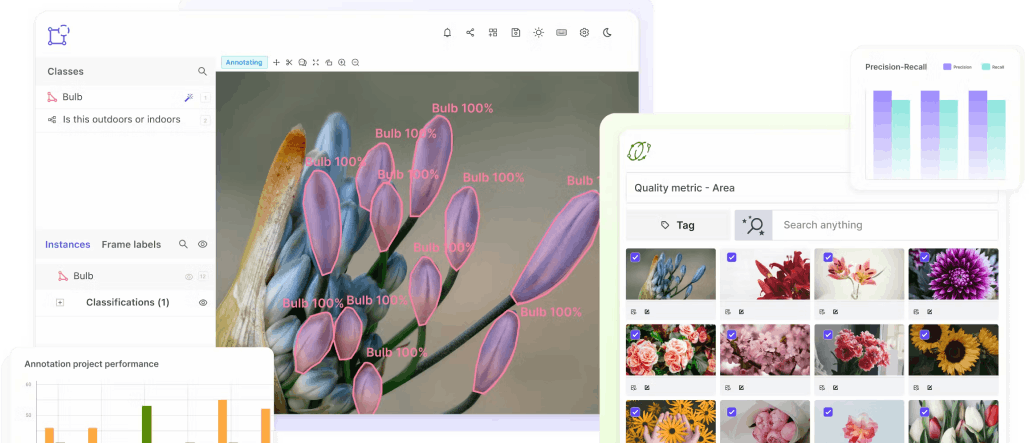Keypoints
Encord Computer Vision Glossary
In computer vision, keypoints refer to distinctive or salient points in an image or video that can be used to identify, describe, or match objects or features in the scene. Keypoints are typically chosen based on their stability, distinctiveness, and repeatability, and are often used as a basis for tasks such as object detection, tracking, recognition, and matching.

Finding key points in an image or video can be done using a variety of techniques. Feature detection algorithms are a popular method that can find distinctive or instructive points in a picture based on particular traits, including corners, edges, or blobs. Other methods for locating and describing keypoints based on their local appearance or texture include template matching or local invariant feature descriptors.
Keypoints may be represented by their coordinates in the image or by a feature descriptor that captures the immediate surroundings' texture or appearance.
How are Keypoints used in Computer Vision?
Keypoints are used in computer vision for tasks such as object detection, tracking, and image alignment. Keypoints are detected using algorithms like SIFT, SURF, or ORB, which identify stable and repeatable features across images. Once detected, keypoints can be matched between images to establish correspondences, enabling tasks like image registration or 3D reconstruction. Keypoints can also serve as reference points for tracking objects or estimating pose and motion. By focusing on these salient points, keypoints provide a robust and efficient way to extract and analyze relevant information from images in various computer vision applications.
How are Keypoints Detected in Images?
Keypoint detection algorithms typically analyze the image at different scales and orientations to identify distinctive features. One common approach is to use filters or operators, such as the Laplacian of Gaussian (LoG) or Difference of Gaussians (DoG), to identify regions with significant intensity variations. These regions, often referred to as blobs, corners, or edges, are potential keypoints. Another approach involves analyzing the image gradient, where keypoints are detected at locations with high gradient magnitude and direction changes. The Harris corner detector is an example of a method that identifies keypoints based on local intensity variations and gradient information. These algorithms aim to identify stable and repeatable keypoints that can be used for further analysis and matching across images.

How are Keypoints used in Feature Matching?
Keypoints are used in feature matching by detecting and describing distinctive features in images. Algorithms analyze the local image content around keypoints and generate descriptors that capture the visual characteristics of those keypoints. In feature matching, these descriptors are compared between images to establish correspondences, enabling tasks like image registration, object recognition, and motion tracking. Matching keypoints and their descriptors allows for the identification of corresponding features across images, providing a basis for aligning or associating similar regions and enabling various computer vision applications that rely on comparing and aligning visual information.